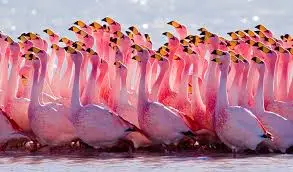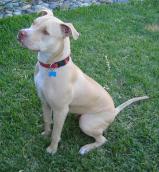
This is a placeholder text
Group text
by 1Ruger1 on 13 October 2018 - 02:10
Koots~ thank you 😊
by Rik on 13 October 2018 - 02:10
no daryle, I think in some instances throwing out the baby is the best way to go. I have done just that more than once, one time with the mega e litter I have referenced before and another with very poor character. never bred from those females or males again or anything from the litters. well, the mega e litter was self eliminating.
had a laugh at SS post because she pretty much nailed one of my disasters with her previous post on ASL.
I will still disagree with you (not sl vs wl, I will happily participate if you want to start a new thread![]() ) but that breeding for specific traits is the same basics. no matter the traits or for that matter the breed or even the animal.
) but that breeding for specific traits is the same basics. no matter the traits or for that matter the breed or even the animal.
apoligize if I misunderstood you.
Rik
by duke1965 on 13 October 2018 - 03:10
so for someone here not to get upset I will from now on not talk about zebras anymore to explain genetic similarity in a breed and or species LOL

by Hundmutter on 13 October 2018 - 07:10
Well, every so often there appears a rather grey flamingo ...
Duke you said a couple of pages back that my thoughts on the koala situation were wishful thinking. But can I just remind you that I had nothing to do with the koalas thing - and everything to do with being present when the inbred captive deerherd was dying off because of 'inbreeding depression', being around to witness the improvement when a new unrelated male was brought in.
Rik & Daryl, is it not true that it should be perfectly possible to breed a German Shepherd that was virtually exclusively saddle black & tan (i.e. 'identical' like wild species are); but to continue to breed for other features, in that the less 'required' things would be slowly removed from the breed (alt. colours, long coats, excessively curved toplines, long feet, & probably some of the 'invisibles', like lack of drive and trainability; or HD, other genetic conditions) IF EVERY BREEDER WORLDWIDE HAD EXACTLY THE SAME AIMS ? Was that not where the Martin brothers were heading ?
by duke1965 on 13 October 2018 - 08:10
the wishful thinking was on your comment that probably the Original group was very diverse, and probably some fresh blood was introduced over time, when the general fact is that one century ago there were few animals released on remote Island and now they grew out to uncontrollable amounts, without humans telling any koala who he or she can or cannot mate wit, indicating that mother nature can take control of things, even with heavily inbred population
That zoos etc have to worry about inbreeding is not a result of inbreeding itself, but from the fact that in general a zoo has a breedingpair and that breedingpairs offspring, so, yes that is too limited to continue from, generally speaking
finally, none of the anti inbreeding lobbyists is able to explain where any breed, in the wild, or GSD today, is able to keep finding non related blood to outcross to, over multiple generations
by joanro on 13 October 2018 - 12:10
Duke: so for someone here not to get upset I will from now on not talk about zebras anymore to explain genetic similarity in a breed and or species LOL
Lol, Duke, you have missed the point.
It's not a matter of being upset, but more a case of setting the facts straight so that some raders are not misled with your comparisons.
Flamingo. A species so must have uniformity
Zebra, a species so uniformity present
Germanshepherd dog, a breed within a species with no uniformity but huge range of variation in structure and color hair, temperament, etc. These are all one species.......they don't look like your zebra nor your flamingos because they are domesticated altered by human selection, not nature!!!
.jpeg) .
. .jpeg) .
. .jpeg) .
..jpeg) .
..jpeg) .
..jpeg) .
.(2).jpeg) .
. .jpeg) .
.
by Rik on 13 October 2018 - 15:10
Cheetahs are apparently very closely bred and are suffering some documented issues from it.
some breeds/species have been known to inbreed to a "bottleneck" (I took his to mean flaws become evident and are bred out) I can see this if it's a flaw that makes one more susceptible to predators or less able to fight for breeding rights. not all species studied were able to get past the bottleneck.
by joanro on 13 October 2018 - 15:10
Lions are inbreeding where numbers have been decimated by over hunting them and by distemper from villagers' dogs.
by Prager on 13 October 2018 - 16:10
I am with Joan on this.
Different packs or animals in different separate areas may be and are having a higher coefficient of inbreeding. But these groups are genetically independent of each other. So inbreeding is natural within a group and it gest mitigated by occasional mixing of genetically different groups. However if all animals of the same species on the planet are inbred = have a same genetic pool, then for survival, it is important that there are no genetic faults and that environment does not change. While this may work for let say Cheetahs it is all well and good if the environment is stable and new virus or other pathogen or parasite does not appear. and so on. That is why in stable environment cheetahs can live fine. However, that can change if environmental conditions change, since being inbred means that the lineage is less likely to evolve in response to new environmental conditions or pathogens. For natural selection to work, it requires a genetic divisibility. So if the genetic reversibility within species is absent, the species simply cannot adapt. It may only take a novel virus or a changed climate to wipe out the cheetah for good.
One thing Duke1965 is confused about is that he is mixing similarities caused by natural selection of the fittest on one side and genetic inbreeding on the other. To try to deduce from the similarity of color or markings that zebras or flamingos or mountain lions or, ravens or...or...or,..are inbred is akin to say that 2 solid black or black and red GSDs are inbred because they too have identical patterns or colors. We all know that that is not so.
We must be careful that we are not logically mixing cause and coincidence. In other words just because the pattern or any other characteristic is similar or the same in inbred animals does not necessarily mean that same collor of two individuals is an indication of inbreeding. As a rule I would say, you can not look at 2 similarly looking animals within a species and say that because they look the same they are inbred. That is absolutely not so. The inbreeding similarities are on different - to naked eye not obvious level. Like the immune system is the same for example.
by joanro on 13 October 2018 - 17:10
Inbreeding tightens or narrows the ability to adapt to changes in the environment. And the more specialized a species is, or even certain groups within a species, the harder it is to adapt to environmental chandge....the more inbred the less likely adaptation will occur.
The cheetah is very specialized in it's hunting and prey source. When herds of Thompson gazell are reduced, for example, the harder it is for the cat to find replacement source....like water buffalo would be out of the question a replacement food.
The lion is more adaptable as it is not as specialized in it's pretty selection....but inbreeding causes it to not be able to adapt to new pathogen exposier.....distemper is killing off many lions where they have become isolated from other prides.
Contact information Disclaimer Privacy Statement Copyright Information Terms of Service Cookie policy ↑ Back to top




